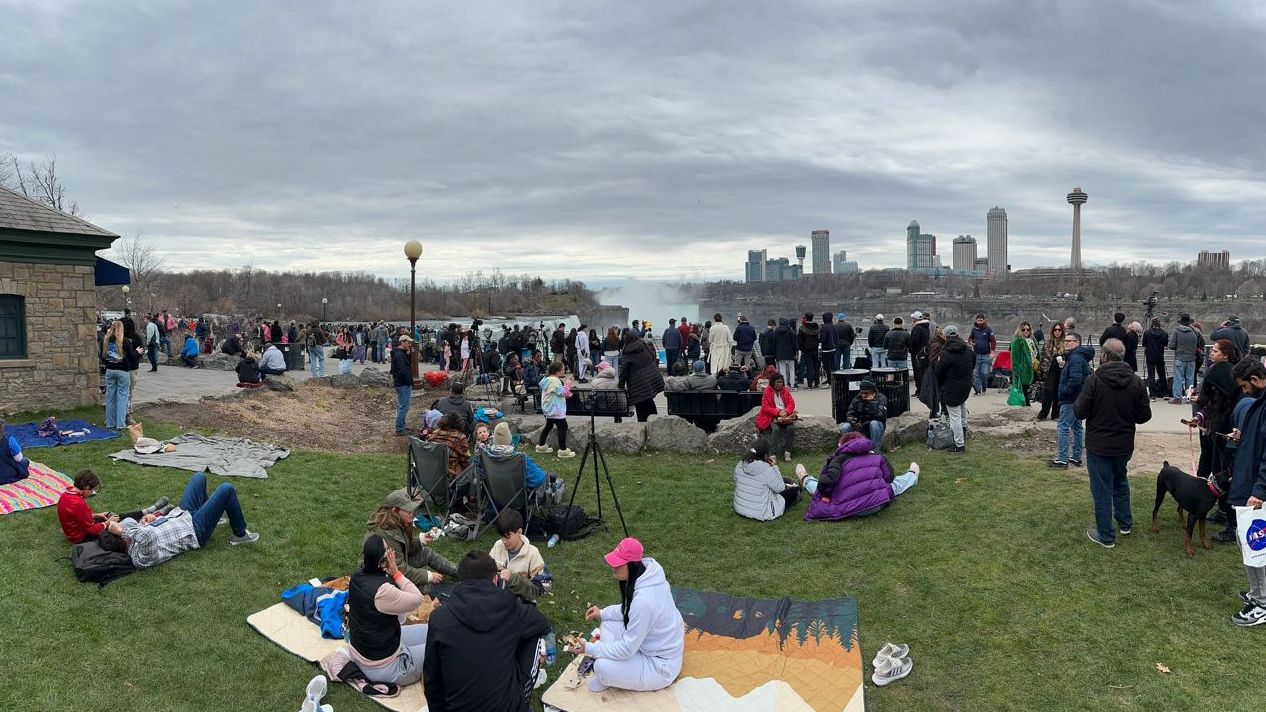New Yorkers took in the eclipse in different ways. Some attended social gatherings, some stayed home with family, while others traveled from out of state to catch a better look.
Researchers from the State University at Oswego not only enjoyed Monday's solar eclipse, but also took advantage of the generational event to launch weather balloons to learn more about weather.
Students and faculty at SUNY Oswego launched the weather balloons to gather atmospheric data from the event, part of the Nationwide Eclipse Ballooning Project funded by NASA.
"It is a once-in-a-lifetime event for moment of us," said Zeke Caldon, student research assistant for the Eclipse Ballooning Project.
Yonggang Wang, an assistant professor at SUNY Oswego, described the event as a miracle.
"Because as a meteorologist, this does not happen a lot for everyone, right? But for a meteorologist, it is really a good and rare condition, so we can see how the total eclipse, or annular eclipse, can impact our atmosphere.”
That’s what students and faculty are trying to learn at SUNY Oswego as part of the Nationwide Eclipse Ballooning Project.
“What we're doing is we're taking atmospheric measurements during the eclipse to study different effects from the eclipse,” Caldon said.
They gather data by launching weather balloons into the sky every hour.
"It takes measurements of temperature, pressure, humidity, wind speed as it's going up through the atmosphere," Caldon said.
For example, you know, before, during and after the eclipse, we all know that the temperature will change," Wang said. "But how about other parameters? For example, wind both direction and the wind speed, for example, moisture, the amount of moisture and humidity."
This data can potentially lead to more accurate weather forecasts.
“Our ultimate goal is to improve the performance of numerical weather prediction models, right? So that we can provide a better forecasting for our community," Wang said. "And the eclipse, the data we are going to collect, do the clips that can help us to collect that data so that we can integrate that data into the model simulation.”
The next step? Analyzing what they gathered from a once-in-a-lifetime moment.
“I also know the data is going to be really interesting to go through, hopefully get some presentations at conferences about temperature lag and gravity waves and all the effects that we're studying with this eclipse,” Caldon said.







